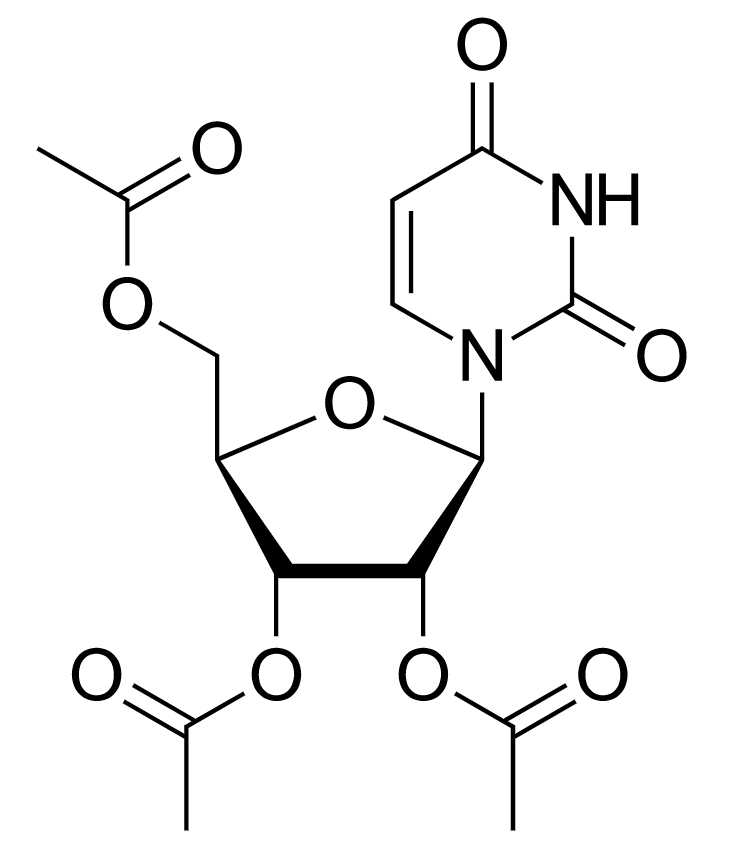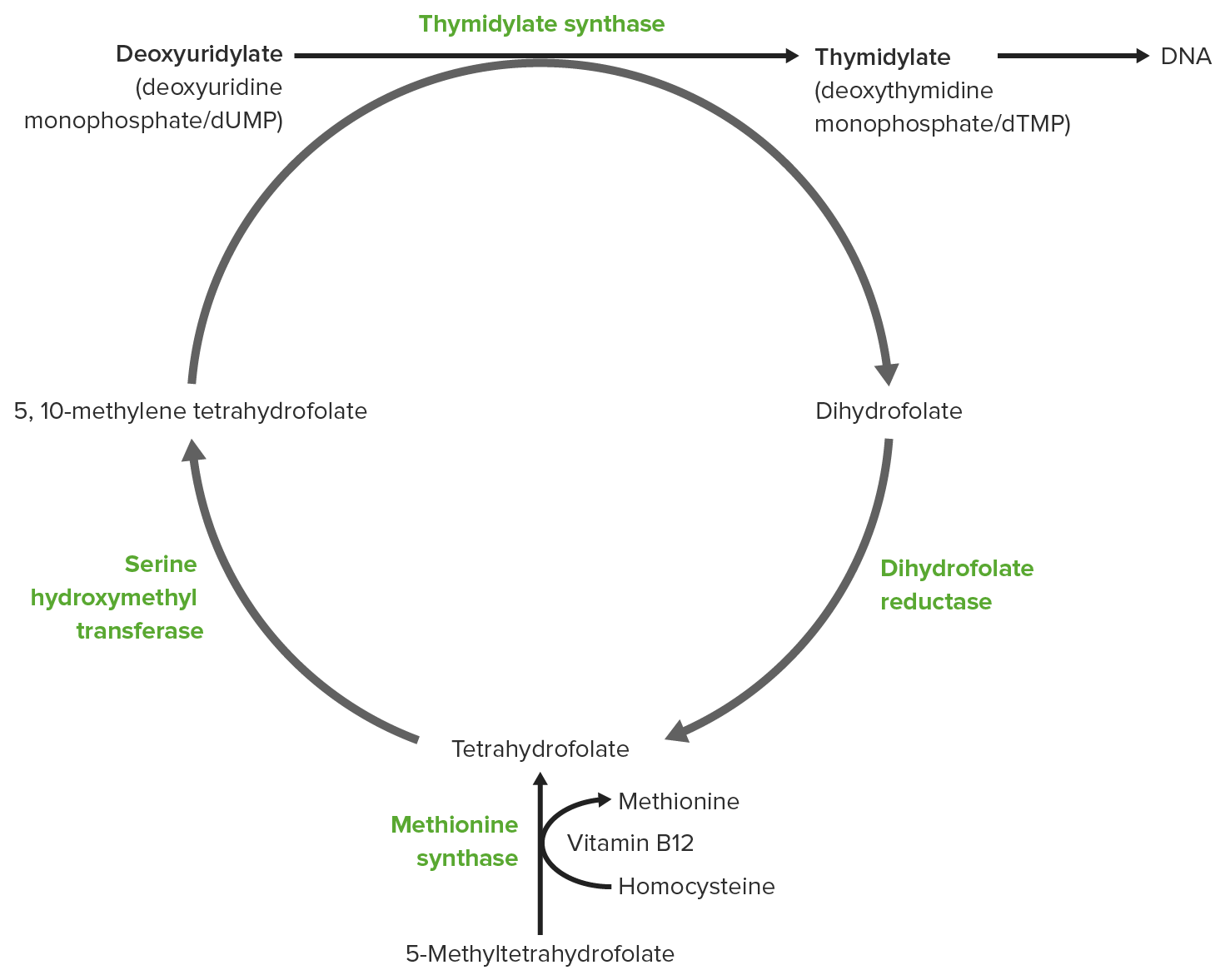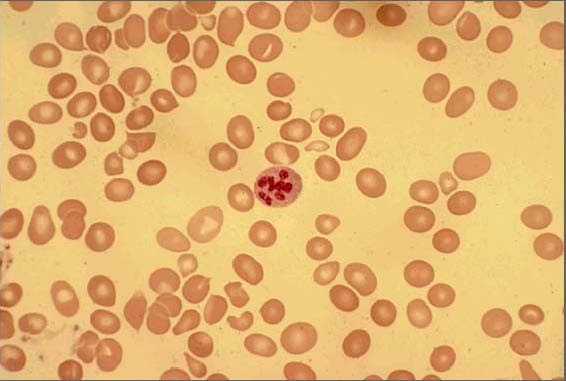Playlist
Show Playlist
Hide Playlist
Megaloblastic Anemias
-
Slides Macrocytic Deficiency.pdf
-
Download Lecture Overview
00:01 I haven’t gotten into non-megaloblast yet. 00:02 Now, these are the common B12 and folate that you need to know, deficiencies. 00:06 However, there is a couple of others that you have to know of. 00:11 The other megaloblastic diseases that you must be familiar with or current day boards in practice, one's called orotic aciduria. 00:18 Orotic aciduria. 00:20 It’s an autosomal recessive disorder. 00:23 And what happens? Well as the name implies, you’re not able to convert your orotic acid into UMP, uracil. 00:32 Interesting, huh? What do you mean? Well, the name says orotic aciduria which means that I have accumulation of orotic acid in your urine. 00:41 Fantastic! Why? Well, you end up missing an enzyme called UMP synthase. 00:47 Clear? So if you’re missing the enzyme or synthase of UMP, then you’re stuck in the form of orotic acid. 00:54 That must be clear. 00:56 What is this part of? It’s part of your de novo pyrimidine synthesis pathway. 01:01 What are we dealing with? Megaloblastic anemia. 01:04 Those of you knew about B12 and folate, fantastic. 01:07 We’ll go into much greater detail. 01:09 However, the other important megaloblast that we’re looking at here, still under the category of macrocytic. 01:17 I haven’t touched non-megaloblast yet. 01:19 I’ll talk to you about that in a second. 01:20 Now, presentation becomes important. 01:22 Here is a child and failure to thrive, there might be developmental delays and absolutely refractory to B12 and folate treatment. 01:31 What does that mean? That means that megaloblasts are here, you find them on your peripheral blood smear. 01:36 And, well, B12 and folate is not going to help you replenish the UMP synthase, right? So it’s refractory. 01:46 Next, a very important point, pay attention. 01:48 There is no hyperammonemia. 01:53 There is no hyperammonemia. 01:55 What does that mean? Well, there is another important biochemical pathology that you need to know. 01:58 It’s called ornithine transcarbamylase deficiency. 02:03 So, the enzyme here that is missing is called UMP synthase. 02:09 The condition that we are referring to, at this point, is orotic aciduria. 02:12 There is another important enzyme deficiency that you need to know of. 02:16 That’s ornithine transcarbamylase. 02:19 In that deficiency, you’re also going to find increased orotic acid. 02:23 However, you will find hyperammonemia. 02:28 Be very familiar with the differences between these two orotic acidurias. 02:33 Two different enzyme deficiencies resulting in different concentration of your ammonia within the blood, within the blood Treatment: Well, it was refractory to B12 and folate. 02:43 Look for that. 02:44 That should clue you in. 02:45 You see no hyperammonemia, this will then indicate you have UMP synthase deficiency or defect. 02:53 What are you going to do? You’re going to bypass. 02:57 You’re going to bypass this type of enzyme with its catalytic activity. 03:01 And so therefore, it’s called uridine monophosphate. 03:04 And this is then used to bypass the enzyme. 03:06 And so therefore, you continue having pyrimidine synthesis. 03:10 Is that clear? The bottom line is this though, if you do not have pyrimidine, you don’t have DNA. 03:14 If you don’t have DNA, then you don’t have proper formation of your cells. 03:19 If you don’t have proper maturation of your cells, what is that called in your bone marrow? Good. 03:24 Megaloblasts. 03:27 That is one other megaloblastic anemia that you need to know. 03:29 So now, there are 3.
About the Lecture
The lecture Megaloblastic Anemias by Carlo Raj, MD is from the course Macrocytic Anemia – Red Blood Cell Pathology (RBC).
Included Quiz Questions
Which of the following is a differentiating feature between orotic aciduria and ornithine transcarbamylase deficiency?
- Hyperammonemia
- Orotic aciduria
- Hyperphosphatemia
- Hyperkalemia
- Hypercalcemia
The deficiency of which of the following enzyme may lead to megaloblastic anemia?
- Uridine monophosphate synthase
- Ornithine transcarbamylase
- Orotidine 5’-phosphate decarboxylase
- Pyrimidine monophosphate synthase
- Dihydroorotase
Which of the following statements regarding orotic aciduria is NOT true?
- It can be treated with vitamin B12 supplementation.
- It can be treated with uridine monophosphate supplementation.
- Children present with failure to thrive and developmental delay.
- It cannot be treated with folate supplementation.
- The pathology is due to abnormal de novo pyrimidine synthesis.
Customer reviews
5,0 of 5 stars
| 5 Stars |
|
5 |
| 4 Stars |
|
0 |
| 3 Stars |
|
0 |
| 2 Stars |
|
0 |
| 1 Star |
|
0 |






